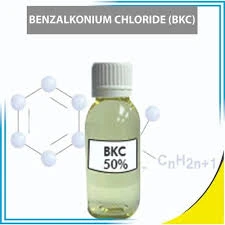coagulation and flocculation in water treatment
Coagulation and Flocculation in Water Treatment
Water, an essential resource for life, undergoes various treatment processes to ensure it is safe for human consumption and environmental sustainability. Among these processes, coagulation and flocculation play a crucial role in removing suspended particles, pathogens, and contaminants from water. This article delves into the principles of coagulation and flocculation, their significance in water treatment, and the effectiveness of various chemicals employed in these processes.
Understanding Coagulation and Flocculation
Coagulation and flocculation are sequential processes used to remove fine suspended particles from water. Coagulation involves the addition of coagulants, chemical substances that destabilize the particles suspended in water by neutralizing their charge. Common coagulants include aluminum sulfate (alum) and ferric chloride. When these coagulants are added to water, they interact with the particles, causing them to clump together, forming larger aggregates known as flocs.
Following coagulation, the flocculation process begins. This step involves gently mixing the water to promote the growth of flocs. During flocculation, the small aggregates collide and adhere to one another, leading to the formation of larger flocs that can be easily removed by sedimentation or filtration. The efficiency of this process depends on various factors, including mixing speed, duration, and the concentration of the coagulant.
The Significance of Coagulation and Flocculation
The significance of coagulation and flocculation in water treatment cannot be overstated. Firstly, these processes effectively remove turbidity, which is caused by suspended solids in water. High turbidity can hinder disinfection processes and may harbor harmful microorganisms, posing health risks to consumers. Through coagulation and flocculation, water treatment plants can significantly reduce turbidity, ensuring water clarity and safety.
coagulation and flocculation in water treatment

Secondly, these processes aid in the removal of organic and inorganic contaminants. Natural organic matter, such as plant debris and microorganisms, can react with disinfectants like chlorine to form harmful byproducts. Coagulation and flocculation help mitigate this issue by removing these organic compounds before disinfection, thereby enhancing water quality and safety.
Moreover, the removal of pathogens is crucial in preventing waterborne diseases. Coagulation and flocculation help reduce the concentration of bacteria, viruses, and protozoa in water supplies, thereby contributing to public health safety. In regions where access to clean water is limited, these processes become vital in providing communities with safe drinking water.
Factors Affecting Coagulation and Flocculation
Several factors influence the effectiveness of coagulation and flocculation processes. The type and dosage of coagulant are paramount. Different water sources contain varying types and concentrations of impurities, necessitating tailored treatment approaches. Additionally, the pH of the water plays a significant role, as it affects the solubility and activity of coagulants. Optimal pH levels vary depending on the coagulant used, and adjustments may be necessary to maximize efficiency.
Mixing intensity and duration also impact the size and density of the flocs formed. Insufficient mixing may lead to inadequate contact between particles and coagulants, while excessive mixing can break flocs apart. Ultimately, striking a balance is essential for achieving optimal floc formation.
Conclusion
Coagulation and flocculation are fundamental processes in water treatment, essential for producing safe and clean drinking water. By effectively removing suspended particles, pathogens, and contaminants, these processes play a pivotal role in protecting public health and environmental integrity. As water treatment technologies continue to evolve, so too will the methods and chemicals used in coagulation and flocculation, ultimately enhancing our ability to provide safe drinking water for all. Understanding these processes is vital, especially in an era where water scarcity and quality are increasingly pressing global issues. Through continued research and innovation, we can ensure that coagulation and flocculation remain integral components of effective water treatment strategies.
-
The Power of Isothiazolinones in Modern ApplicationsNewsMay.08,2025
-
Flocculants in Water TreatmentNewsMay.08,2025
-
Flocculants and Chemical Solutions: What You Need to KnowNewsMay.08,2025
-
Flocculants and Chemical Solutions: A Growing IndustryNewsMay.08,2025
-
Essential Chemicals: Polymaleic Anhydride and MoreNewsMay.08,2025
-
Acrylic Polymers: Essential Solutions for IndustryNewsMay.08,2025





